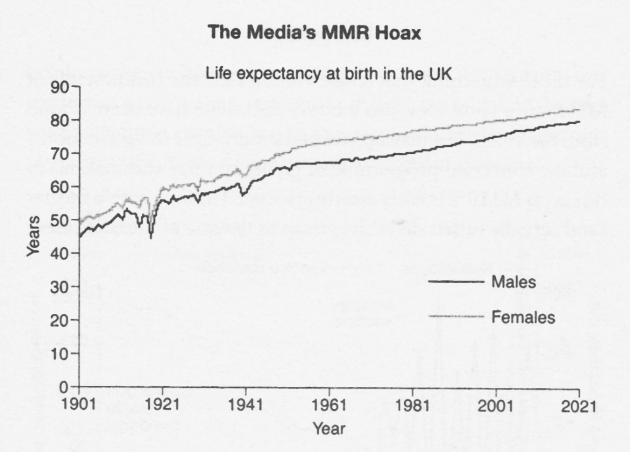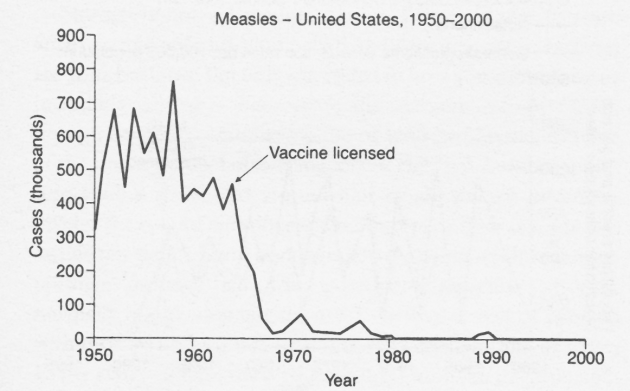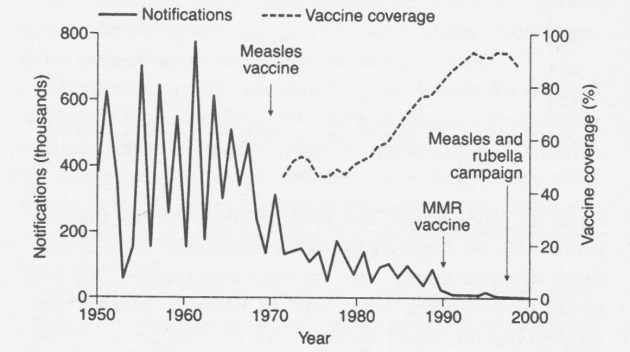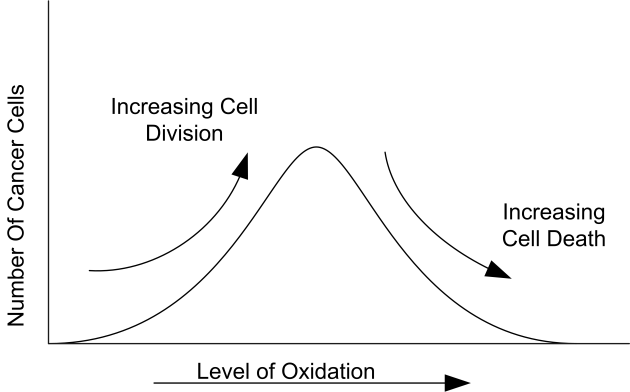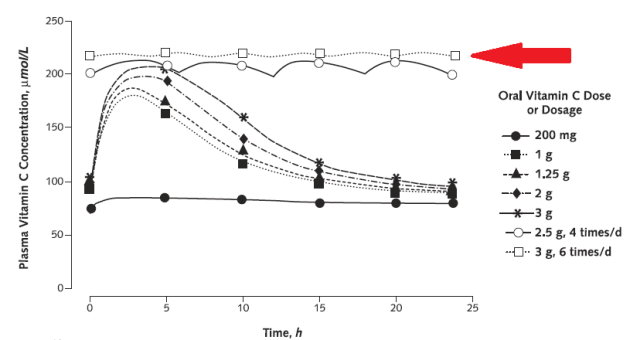Surviving Ebola!
August 8, 2014 2 Comments
Steve Hickey PhD and Hilary Roberts PhD
Emerging diseases, such as Ebola, pose an increasing risk to health as the virus adapts, allowing it to spread in the human population. People are understandably concerned about epidemics with such a high death rate: up to 90% in this case. It is possible for people to reduce their risk of death from this and other emerging viral diseases, using vitamin C. However, in order to avoid or survive an infection, vitamin C needs to be used in a particular way. This is a simplified explanation of how vitamin C works to fight infections.
The Internet contains many claims about the use of vitamin C. The primary claim, that vitamin C can help people survive and combat the disease, is correct. Much of the rest of the information is wrong, wishful thinking, or else it has been generated by commercial concerns, to encourage people to buy a version of the supplement.
If you are worried about Ebola (or other acute infections), this is what you need to know.
Vitamin C
Vitamin C is the primary antioxidant in the diet. Most people do not take enough to be healthy. While this is true of many nutrients, vitamin C is a special case. The government will tell you that you only need about 100 mg a day and that you can get this amount from food. Whatever the politics, the recommended dietary allowance (RDA) is not science. For almost a century, some leading doctors and scientists have been telling people that they need more – much more.
The required amount of vitamin C varies with the person’s state of health. To prevent acute scurvy, you need only 5 mg a day, or even less. Avoiding acute scurvy is the rationale for the RDA. A normal adult in perfect health may need only a small intake, say 500 mg per day. However, people are not always in perfect health and more is needed when someone is even slightly under the weather. Similarly, to avoid illness, the intake needs to be increased.
The intake for an otherwise healthy person to have a reasonable chance of avoiding a common cold is in the region of 8-10 grams (8,000-10,000 mg) a day. This is about ten times what corporate medicine has tested in their trials on vitamin C and the common cold. Ten grams (10,000 mg) is the minimum pharmacological intake; in other words, 10 grams a day may help if you have a slight sore throat but more (much more) may be needed. To get rid of a common cold, you may need something in the order of 60 grams (60,000 mg) a day. With influenza the need might be for 100 grams (100,000 mg) a day. Since it varies from person to person, and from illness to illness, the only way to find out is to experiment for yourself.
Dynamic flow
The problem with oral intakes is that healthy people do not absorb vitamin C well. This is due to something Dr Robert Cathcart called bowel tolerance. Take too much of the vitamin in a single dose and it will cause loose stools. In good health, a person might be able to take a couple of grams at a time without this problem. Strangely, when a person becomes sick they can take far more without this side effect: as much as 20-100+ grams a day, in divided doses.
High dose vitamin C has a short half-life in the body. The half-life is the time for the level in the blood plasma to fall back to half its concentration. Until recently, some people claimed that the half-life of vitamin C was several weeks. We have shown that this long half-life applies only to low doses. By contrast, the half-life for high blood levels is only half an hour. This short half-life has many implications for the use of high dose vitamin C and implies that the period between doses needs to be short – a few hours at most.
The aim is to achieve dynamic flow, to get vitamin C flowing continuously through the body. Dynamic flow requires multiple high doses, taken through the day. When separated in time, each dose is absorbed independently. Two doses of 3 grams, taken 12 hours apart, are absorbed better than 6 grams taken all at once. Multiple large doses, say 3 grams four times a day, produce a steady flow of the vitamin from the gut, into the bloodstream and out, via the urine. Some of the intake is not absorbed into the blood and stays in the gut, as a reserve against the early onset of illness. As illness begins, the body pulls in this “excess” to help fight the virus.
The idea behind dynamic flow is that the body is kept in a reduced (antioxidant) state, using high doses. There is always vitamin C available, to refresh the body and other antioxidants. Each vitamin C molecule (ascorbic acid) has two antioxidant electrons, which it can donate to protect the body. It then becomes oxidised to dehydroascorbate (DHA). This oxidised molecule is then excreted, so the body has gained two antioxidant electrons. The kidneys reabsorb vitamin C, but not DHA. So, the vitamin C molecule is absorbed, used up, and then the oxidised form is thrown out with the rubbish. Some so-called sceptics claim that high dose vitamin C only produces “expensive urine” – we hope you can see their fallacy.
The effectiveness of vitamin C is not directly proportional to the dose. If you take too little, the effect will be minimal. At a certain intake, there is a transition, above which vitamin C becomes highly effective. Below this level, the effect is small; above it, the effect is dramatic. The problem is that no-one can tell you in advance what intake of vitamin C is needed in a particular individual. The solution is to take more – more than you think necessary – more than you consider reasonable. Basically, the mantra is dose, dose, dose – or “Moar vitamin C!”
Types of Vitamin C
Straightforward, low cost ascorbic acid is the preferred form of supplement. Vendors May try to sell you “better absorbed” forms with minerals or salts such as sodium, potassium or calcium ascorbate, and so on. These are irrelevant, if not counterproductive, for high intakes. It is worth noting the following:
- Timing is more important than form. Two large doses of ascorbic acid taken a little time apart are better absorbed than a single dose of mineral ascorbate.
- Mineral ascorbates are salts and do not carry the same number of antioxidant electrons. Ascorbic acid has two electrons to donate while a salt typically has only one. With high doses, the “improved” forms are thus only about half as effective. This is consistent with reports that mineral forms are correspondingly ineffective in combating illness.
- Ascorbic acid is a weak acid, much weaker than the hydrochloric acid in the stomach. Mineral ascorbates may be better tolerated, as they make the stomach more alkaline than ascorbic acid. However, an alkaline stomach is not a good idea – there are reasons the body secretes hydrochloric acid into the stomach, including preventing infection. Furthermore, if you are coming down with a haemorrhagic viral infection, mild discomfort will not be something of great concern.
- For high intakes, capsules of ascorbic acid are preferable to tablets. This is because tablets are packed with fillers and it is not wise to take massive doses of these chemicals. Check the ingredients – you want to take ascorbic acid and very little else. Bioflavonoids are alright, and the capsules may be made with gelatine or a vegetarian equivalent.
- The cheapest way to take ascorbic acid is as powder, dissolved in water. If you do this, use a straw to avoid it getting on the tooth enamel, as it is slightly acidic. You will need a set of accurate electronic scales to monitor the dose. If you do not weight it carefully, it will be difficult to keep close to bowel tolerance.
Intravenous Vitamin C
Ideally, infected people would be given a continuous intravenous (IV) infusion of massive doses of sodium ascorbate. In this case, sodium ascorbate is used, as ascorbic acid is not well tolerated by injection.
- People who are sufficiently ill will not be able to take vitamin C by mouth.
- IV provides the highest possible blood levels
- IV means continuous drip, not an injection (short half-life)
Unless you are a medical professional who can treat yourself and your family, or are exceptionally rich, IV ascorbate will not an option in an Ebola epidemic. People will be asking for the treatment and doctors will be loath to provide it, as it would mean a direct risk to them and, indirectly, their families. (Medical staff are already reported to be deserting hospitals in some infected areas.)
Liposomes
In healthy people, liposomes help the absorption of oral vitamin C; in some circumstances this is also true for sick people. However, we need to dispel some myths propagated by doctors associated with supplement companies.
In a healthy person, higher blood levels (about 600 microM/L) can be achieved using liposomal vitamin C compared with standard ascorbic acid (about 250 microM/L). We were the first to demonstrate this fact experimentally. However, the two absorption methods are different and resultant plasma levels are additive, if both intake methods are used together (something like 600 + 250 = 850 microM/L). Since ascorbic acid is cheaper than liposomal vitamin C, it is cost effective for a healthy person to start with ascorbic acid and top up with liposomes, as required.
A sick person absorbs much more standard ascorbic acid than a normal person. Thus, when a person becomes ill they can absorb massive doses of standard ascorbic acid, using the dynamic flow approach. If you are sick, taking a gram of liposomal vitamin C instead of a gram of cheap ascorbic acid will provide little extra benefit. Both doses of vitamin C will be well absorbed and the liposome contains sodium ascorbate which is less effective. Liposomes only provide added benefit once the sick person has approached bowel tolerance levels, using standard ascorbic acid.
Liposomal vitamin C is NOT more effective than IV for fighting acute infections. This suggestion is unscientific and unsupported by data. We prefer liposomes for chronic infections and cancer, but this does not extend to acute illness. Wishful thinking is no replacement for rational thought.
There is a lot of hype around the fact that liposomes can be absorbed directly into cells. Many liposomes are absorbed from the gut and pass into the liver, where they are stored and the vitamin C released. Liposomes may also float around in the bloodstream, lymph nodes, and so on, waiting to release their contents or be taken up by cells. The cells that take up the liposomes are not necessarily those that are most in need of vitamin C. Moreover, the cells that take up the microscopic bolus of vitamin C may suffer side effects; liposomes are basically nanotechnology and have additional theoretical issues. Once again, people promoting the idea that liposomes are more effective than IV are often associated with companies providing the product.
Prevention
To have a reasonable chance of avoiding a major viral infection, a daily intake of at least 10 grams of ascorbic acid is needed. The idea is to start low, say taking 500-1,000 mg, four times a day. Build up the intake to close to bowel tolerance; increased wind and large soft light coloured stools will occur before diarrhoea signals that bowel tolerance has been exceeded. At this stage, back off the dose a little, to a reasonably comfortable level.
At the first hint of an infection – feeling unwell, itchy throat, fatigue, and so on – take more ascorbic acid. If the hint of impending sickness is mild, take perhaps 5 grams every half hour or even more frequently. Anything more than a hint of infection, means taking as large a dose as you feel could be tolerated and follow this by taking 5 grams every half hour. The rule is to take as much as you can without going over the tolerated level: you will probably be taking too little, even though you are trying hard to take a massive dose.
If you are already in dynamic flow and want extra protection, then add liposomal vitamin C. Take it at the same intervals as the ascorbic acid, that is several times a day. The limit is once again bowel tolerance – take too much and it will give you loose stools. This will provide the maximum preventive effect, for the lowest cost.
Treatment
We assume that you are not a medical professional and do not have access to IV ascorbate. However, if IV ascorbate is available, it should be given slowly and as continuously as possible.
The first important thing is to start the treatment early. The longer a person waits after the initial symptoms, the less effective the treatment will be. If the illness has been allowed to develop, the sick person may not be able to take anything orally. A medical professional might be able to provide an IV, or a vitamin C and liposomal C enema, but we shall ignore that possibility here. Medical professionals can deal with such things with little difficulty, but others may do more harm than good.
Once again, the idea is to get dynamic flow going with as much ascorbic acid as can be tolerated. In this case, the doses are massive. Five to ten grams every half hour, through the day, will provide 120 to 240 grams a day. Even at this high intake, the blood plasma levels may be low or undetectable, at most 250 microM/L will be achieved. So the question then becomes how much additional liposomal vitamin C the patient can tolerate.
A practical approach would be to start with 5 grams of ascorbic acid and a similar amount of liposomal vitamin C in very frequent doses. Remember the key is dose, dose, dose. Moar vitamin C!
How it Works
The mechanism of action of high dose vitamin C is known and understood. In normal healthy tissues it acts as an antioxidant. In other tissues, it generates hydrogen peroxide, the chemical that platinum blondes use to bleach their hair. Hydrogen peroxide is formed in sick and inflamed tissues, for example in a malignant tumour. The process is typically a form of Fenton reaction, generating free radicals. The oxidation and free radicals arising from the hydrogen peroxide kill bacteria and inactivate viruses. In other words, vitamin C acts as a targeted bleach and antiseptic.
Vitamin C plays a dual role. It makes normal tissues healthier by providing abundant antioxidant electrons. It refreshes other antioxidants. At the same time, it drives processes that inactivate viruses, or kill bacterial and cancer cells. It reprograms cells, switching genes ON and OFF, in response to local inflammation. In addition, it provides signals for cell communications. It upregulates the immune system and helps activate the white blood cells that fight infection.
Vitamin C is unique, because it has low toxicity and can be taken safely in massive amounts. Other antioxidants and supplements will not have a similar effect. Do not be confused and think that Echinacea, for example, will help. Yes, there may be supplements and herbs that provide a little immune system support. This is Ebola we are talking about – get real!
Note, vitamin C is not some magical antitoxin. A disease such as Ebola is not caused by toxins that are inactivated by vitamin C. Free radicals are not toxins. Oxidants are not toxins. Vitamin C nearly always acts by transferring electrons, as an oxidant or antioxidant. It is just basic chemistry. Also, it does not matter if you have poor dental hygiene, this will hardly affect how massive intakes of vitamin C tackle an acute viral infection.
The reason vitamin C helps with viral infection is the massive flow of a substance that acts both as a selective antioxidant and a selective oxidant, throughout the body. In this respect, vitamin C is unique.
Practical Stuff
Sugar interferes with the uptake of vitamin C. If you are using vitamin C to combat a viral infection, do not eat any sugar or carbohydrate (long chain sugars). A low-carb diet is important, otherwise the vitamin C will not be absorbed properly. We stress that this means no sugar and no carbs, at all.
Unfortunately, smoking releases enormous amounts of oxidants and free radicals into the bloodstream. The vitamin C will expend itself, trying to mop up the chemicals from the smoking. We have no moral objections to people smoking: it is a personal choice. However, smoking will hinder even massive doses of vitamin C from preventing infection. Once infected with Ebola, smoking will stop the vitamin C from keeping you alive. If Ebola comes, we suggest a taking a break from smoking and from sugars and carbohydrates.
It is sensible to also supplement with a form of chelated magnesium, such as magnesium citrate, which helps overcome the theoretical risk of kidney stones. For once, RDA supplement levels of magnesium are sufficient. The available data on kidney stones indicates that the issue is probably just fear mongering by corporate medicine, but magnesium supplements are low cost and widely available. In reality, the only established risk from high dose vitamin C supplementation is loose stools. There are some contraindications. People with kidney disease, iron overload disease, or glucose-6-phosphatase deficiency should not take high doses of vitamin C. Such considerations are of little importance to most people in the emergency setting of an epidemic of Ebola or a similar emerging disease.
The reaction that generates hydrogen peroxide in sick tissues can be enhanced a little. To this end, we would take a high dose of selenium with the vitamin C. However, selenium is more toxic than vitamin C, and, in describing the dose as high, we mean relatively normal supplement levels. Methylselenocysteine is a less toxic form and this would be our choice. The normal intake is perhaps 100-200 micrograms (0.1-0.2 mg) a day. We would take 400 micrograms a day during an epidemic and up this to 1,000 micrograms (one milligram) a day, at the initial onset of symptoms. It is possible to go up to 3 mg for short periods, with medical supervision. Anyone taking high dose selenium supplements needs to be aware of the potential side effects and to have appropriate medical support.
Minor supplements may be synergistic with vitamin C. These include alpha-lipoic acid and vitamin K. Alpha-lipoic acid can be taken at reasonably high levels reasonably safely. We would take up to a gram or two a day (1,000-2,000 mg). Vitamin K also helps with blood clotting and is safe in the recommended amounts – we would get the highest dose vitamin K2 supplement available. Note vitamin K is contraindicated in those with clotting disease or those on blood thinners such as warfarin.
Liposomal vitamin C is expensive. Ideally people would order their liposomal vitamin C as a quality product from a reputable company. Where this is not possible we suggest using a method described in a US patent (US20120171280 A1). The ‘recipe’ is under the heading: Example 1 Preparation of Sodium Ascorbate Entrapped Liposomes. However we suggest that the final mix is subject to sonication for several minutes in a standard ultrasound bath. There are some recipes for homemade liposomal C on the internet but the method described in the patent seems more reliable. Note we are not encouraging people to dishonour the patent – this information may be lifesaving if the commercial product is unavailable.
Why Put This Out?
People need to know that vitamin C is an option for fighting Ebola, and how it works. Also, there is a great deal of misinformation, particularly on the internet, from corporate medicine and from supplement vendors and their medical consultants. Moreover, in an Ebola epidemic vitamin C supplements may be hard to source.
This account is intended for intelligent adults, who can make their own rational decisions and take responsibility for their health. We strongly promote the idea that medicine should be based on rational patients, rather than authoritarian doctors. Doctors are there to provide the information for patients, to help them choose between available options. We are scientists, not medics, and we do not give medical advice. This is information only – what you decide to do with it is up to you.
Our opinion is the use of vitamin C in Ebola is a no-brainer. Get the illness and you have at best a 50-50 chance of surviving without vitamin C. Corporate medicine has no effective treatment. Furthermore, if a drug were available, it would be untested and almost certainly unavailable to you, dear reader. Vitamin C is considered safe and should do no harm. The cost of treatment is low. The clinical reports of vitamin C in viral infection are that if you get the dose right, you will survive. Vitamin C is known experimentally to inactivate viruses.
We consider that any reasonably intelligent adult can weigh the information and come to their own rational conclusions. Some people can do little but conform to what is expected. We support the so-called skeptics that think they and their friends in corporate medicine have a better grasp of the science behind vitamin C than we have. They should go with their opinions. There will be no Darwin Awards for those who remove their genes from the population through foolishness in an Ebola epidemic. In the event, we hope people make rational decisions.
Further reading
There are lots of other sources but these make a good fast start for a person beginning an investigation into the antiviral properties of vitamin C.
Yuanpeng Zhang (2012) Method of making liposomes, liposome compositions made by the methods, and methods of using the same, US patent US 20120171280 A. www.google.com/patents/US20120171280 Description of simple way of making liposomal vitamin C.
Hickey S., Saul A. (2008) Vitamin C: The Real Story, the Remarkable and Controversial Healing Factor, Basic Health. The book gives an easy readable account of the story of vitamin C.
Archive of the Journal or Orthomolecular Medicine. Decades worth of clinical observations and reports on vitamin C are available. www.orthomolecular.org/library/jom/index.shtml.
Pubmed www.ncbi.nlm.nih.gov/pubmed contains mostly abstracts of medical research papers. Unfortunately, most of these have been selected to exclude observations on high doses of vitamin C.
Dr Cathcart’s main papers from bowel tolerance to dynamic flow:
Cathcart R. (1981) Vitamin C, Titration to Bowel Tolerance, Anascorbemia, and Acute Induced Scurvy, Medical Hypothesis, 7:1359-1376.
Cathcart R. (1985) Vitamin C, the nontoxic, nonrate-limited antioxidant free radical scavenger, Medical Hypothesis, 18:61-77.
Hickey D.S., Roberts H.J., Cathcart RF. (2005) Dynamic flow: A new model for ascorbate, J Orthomolecular Med, 20(4), 237-244.

